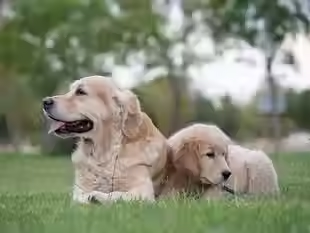

Why Letting Your Dog “Say Hi” Can Lead to Bigger Problems
Apr 12
3 min read
1
14
0

You’ve likely heard it before: “Can my dog say hi?” It sounds friendly and well-intentioned, and many dog owners assume that letting their dog greet every person or dog they pass is a good way to encourage social behavior. But at Perspective K9, we see this mindset create more problems than solutions.
While being social isn't inherently bad, constantly allowing your dog to greet every dog or person they encounter can lead to long-term behavioral issues that are often overlooked - until they become a real problem.
It Teaches Your Dog to Demand Engagement
When your dog gets used to being allowed to “say hi” whenever they want, they begin to expect it. More importantly, they learn that pulling, barking, whining, or escalating excitement often results in getting what they want: interaction.
This often leads to:
Leash pulling and frustration
Vocalizing (barking, whining) around distractions
Lack of impulse control
Reactivity when they are not allowed to greet
Even dogs with friendly intentions can develop pushy, anxious, or overstimulated behavior simply because they’ve been conditioned to think that every walk is a social hour.
Neutrality Is the Real Goal
We all enjoy the idea of a happy, friendly dog - but what's far more valuable is a dog that can remain calm and neutral in a variety of situations.
Neutrality means your dog can walk calmly by people, dogs, and distractions without assuming everything is meant for them. It creates a dog that is:
Focused on their handler
Confident in different environments
Calm and under control
More enjoyable to take in public spaces
The truth is, not every person wants to be approached by a dog. Not every dog is safe or appropriate for interaction. And not every environment is the right time to engage.
Unstructured Greetings Can Be Risky
Allowing your dog to engage freely and without permission isn’t just unproductive - it can also be dangerous.
Greeting random dogs or people without proper introductions or handler control can result in:
Conflict between dogs with mismatched energy
Startled reactions from people who aren’t comfortable with dogs
Negative reinforcement of excitable, rude, or pushy behavior
Potential for fearful or defensive reactions
As much as we want our dogs to be social, we also need to be responsible.
What You Can Do Instead
Structured socialization is not about isolation - it’s about making the right interactions happen in the right way.
Here are a few ways to reframe the way your dog experiences the world:
Teach a reliable “leave it” or “let’s go” cue to move away from distractions.
Reinforce calm behavior when passing other dogs or people.
Give permission to greet only when appropriate and calm.
Build focus and engagement with the handler using simple training drills.
You’ll be amazed how much calmer and more confident your dog becomes when they learn that not every stimulus requires a reaction.
Quality Over Quantity in Socialization
Socialization isn’t about how many dogs or people your dog can meet - it’s about how well they can function around them.
At Perspective K9, we prioritize structured, purposeful exposure over chaotic, overstimulating environments. Whether you’re working with a puppy or an older dog, helping them build neutrality and focus will serve them for a lifetime.
If your dog struggles with overexcitement, pulling, or frustration when they can’t “say hi,” we can help. Contact us to learn more about how our training programs create calm, focused, and respectful dogs.





